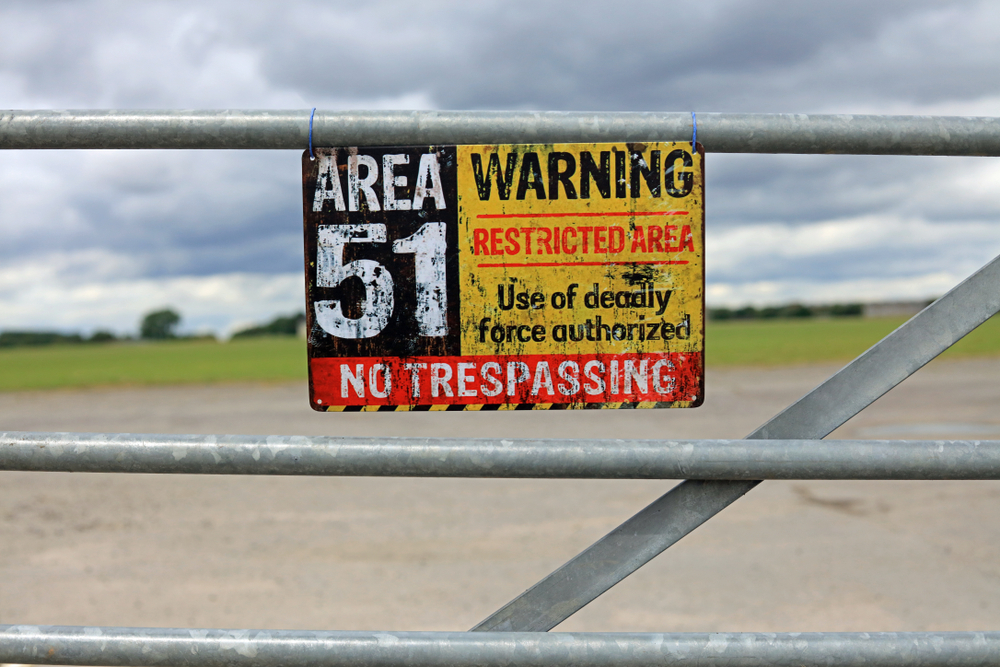Some of the world’s most fascinating locations remain off-limits.
Others are reading now
Throughout history, humanity’s quest for knowledge and exploration has driven us to discover new territories.
Yet, despite our insatiable curiosity, some of the world’s most fascinating locations remain off-limits. These restricted areas are often protected for ecological, security, or safety reasons. Here are ten intriguing places you can’t visit, each with its unique story.
North Sentinel Island, India
Located in the Andaman Islands, North Sentinel Island is home to the indigenous Sentinelese people, who have lived in isolation for thousands of years. Access is strictly forbidden to protect both the tribe from outside diseases and visitors from potential hostility.
The Sentinelese have a history of resisting contact with outsiders, often responding aggressively to boats that approach their shores. Their way of life is preserved due to this isolation, making the island one of the last untouched places on Earth.
Also read
Area 51, United States
This secretive military base in Nevada has become synonymous with conspiracy theories and UFO sightings. Area 51 is heavily guarded, making it one of the most mysterious locations in America. Officially, it serves as a testing ground for experimental aircraft and weapons systems. However, the lack of transparency surrounding its operations has fueled speculation about extraterrestrial technology and cover-ups.
The nearby town of Rachel, Nevada, has embraced this folklore, marketing itself as the “UFO Capital of the World.
Chernobyl Exclusion Zone, Ukraine
Following the catastrophic nuclear disaster in 1986, the Chernobyl Exclusion Zone remains largely uninhabitable due to high radiation levels. The zone covers a 30-kilometer radius around the former nuclear power plant.
Access is restricted to authorized personnel, including scientists and workers involved in cleanup efforts and wildlife monitoring. Despite its dangers, the area has become an unusual tourist destination, with guided tours allowing visitors to glimpse the abandoned buildings and nature reclaiming the land.
Svalbard Global Seed Vault, Norway
Situated on a remote island in the Svalbard archipelago, the Svalbard Global Seed Vault is a crucial resource for global food security.
This underground bunker stores over 1.2 million seed samples from around the world, designed to protect against global disasters that threaten food supplies. Access is limited to a select group of scientists and researchers, ensuring that these vital genetic resources remain safe for future generations.
Lascaux Cave, France
Famous for its stunning prehistoric cave paintings, Lascaux has been closed to the public since 1963 to prevent damage to these delicate artworks.
Discovered in 1940, the cave features over 600 paintings depicting animals and hunting scenes from over 17,000 years ago. Although a replica cave has been created for public visits, the original remains strictly off-limits, highlighting the importance of preservation in cultural heritage.
Ise Grand Shrine, Japan
The Ise Grand Shrine, located in Mie Prefecture, is the most important Shinto shrine in Japan. It consists of two main shrines: the Naikū, dedicated to the sun goddess Amaterasu, and the Gekū, dedicated to the rice deity Toyouke.
Access to the inner sanctum of the shrine is restricted to the Japanese imperial family and Shinto priests. Visitors can admire the traditional architecture from outside, but the spiritual significance of the shrine remains reserved for those chosen by tradition.
Qin Shi Huang Mausoleum, China
Located in Shaanxi province, the Qin Shi Huang Mausoleum houses the Terracotta Army, an extraordinary collection of over 8,000 life-sized soldiers created to accompany China’s first emperor in the afterlife.
The mausoleum is a UNESCO World Heritage Site, and while parts of the army are open to the public, the inner tomb remains sealed to protect it from damage. Excavations and research continue, revealing new insights into ancient Chinese civilization.
Poveglia Island, Italy
Poveglia is a small island in the Venetian Lagoon with a dark past. Once a quarantine station for plague victims and later a mental asylum, it is rumored to be haunted, with estimates suggesting around 150,000 people died there.
Abandoned since the 1960s, access is prohibited, although the local government has considered plans for its redevelopment. The eerie atmosphere and historical significance of Poveglia have made it a subject of fascination for ghost hunters and history enthusiasts alike.
Queimada Grande Island, Brazil
Known as Snake Island, this location is home to the highly venomous golden lancehead viper, which is found nowhere else in the world. The Brazilian government has declared the island off-limits to protect both the fragile ecosystem and the safety of potential visitors.
With estimates of one snake per square meter, this dangerous environment has led to its classification as one of the deadliest places on Earth.
Známensk, Russia
This closed city in Russia houses a missile testing facility and is heavily guarded to protect military secrets and national security. Známensk, along with other similar locations across the former Soviet Union, restricts access to outsiders, maintaining a high level of secrecy. Visitors are not allowed, and the city remains shrouded in mystery, representing the remnants of Cold War-era security measures.
These locations serve as a reminder of the mysteries that still exist in our world, guarded by natural barriers, human laws, or historical events. While our desire to explore remains, certain places will always remain beyond our reach, preserving their secrets for generations to come.


